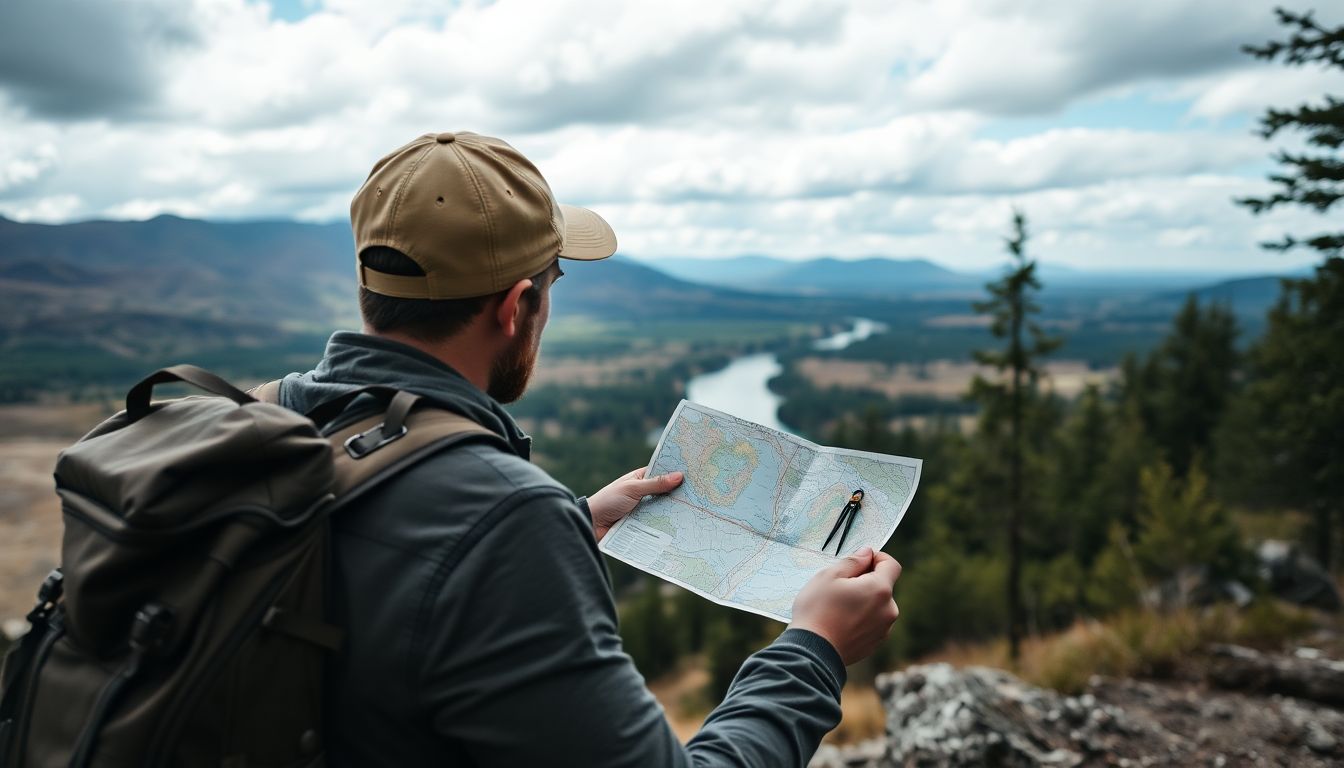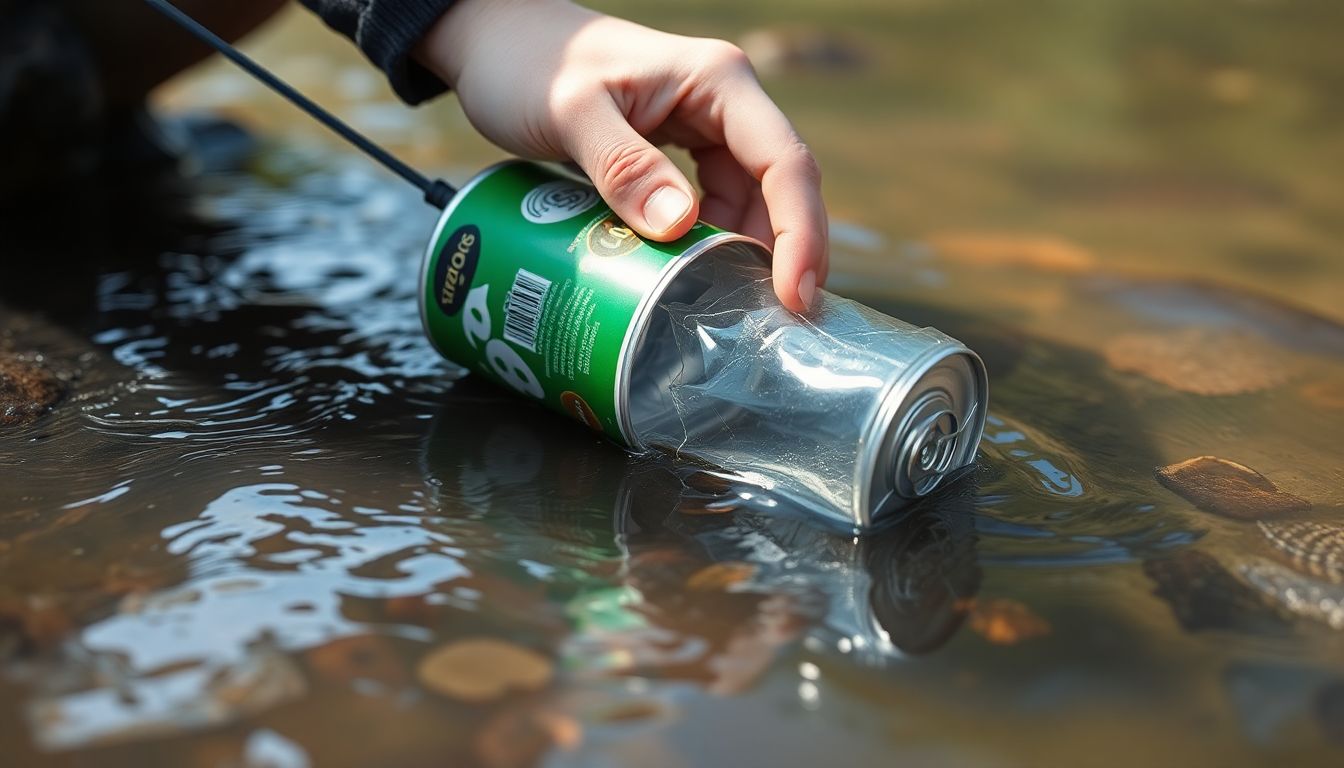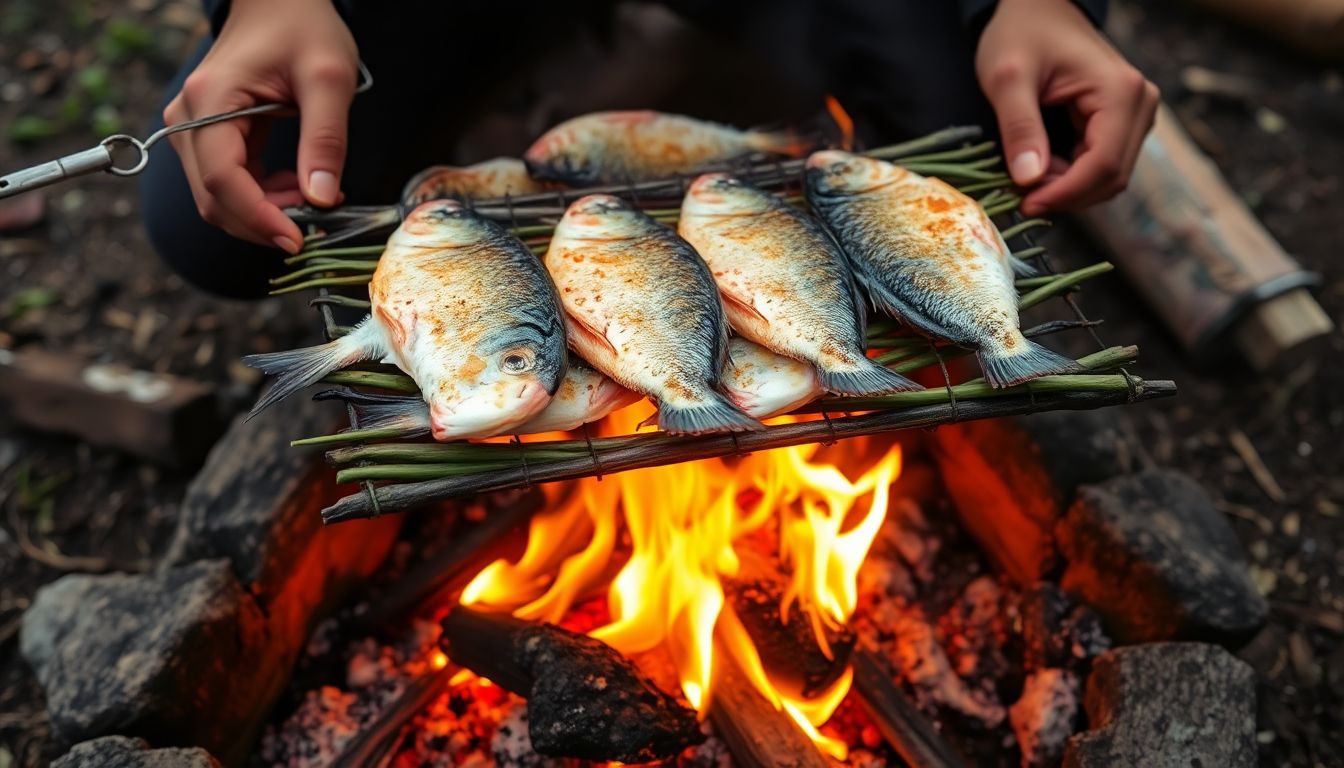Have you ever found yourself in a situation where your next meal was not a trip to the grocery store away, but rather a matter of survival? Welcome to the world of survival fishing, an ancient art and essential skill that has kept humans alive for millennia. In this comprehensive guide, we delve into the fascinating and often overlooked world of emergency food procurement from our aquatic surroundings. But first, let’s address the elephant in the room: why should you care about survival fishing?
According to a study by the National Oceanic and Atmospheric Administration, over 1,000 people die each year in the United States due to drowning while engaged in recreational activities. Many of these tragedies could have been prevented with basic survival skills, including the ability to procure food from the very waters that claimed their lives. This stark reality underscores the importance of understanding and mastering survival fishing techniques.
Now, you might be thinking, ‘I’m no Bear Grylls, I can’t just whip up a fishing line out of nothing and catch my dinner.’ And you’re right, survival fishing is not just about catching fish; it’s about understanding your environment, adapting to your circumstances, and using the resources at hand to ensure your survival. It’s about turning a potential disaster into an opportunity to learn, grow, and thrive.
In this article, we promise to demystify the art of survival fishing. We’ll explore the science behind aquatic foraging, delve into the gear you need (and don’t need) to catch your next meal, and provide step-by-step guides to help you master the techniques that have sustained humans for centuries. By the end of this article, you’ll not only know how to catch fish with your bare hands, but you’ll also understand the principles behind survival fishing that can be applied to any emergency food procurement situation.
So, whether you’re a seasoned outdoorsman looking to expand your skillset, or a beginner eager to learn a vital life skill, this article is for you. Let’s dive in and explore the fascinating world of survival fishing.
Mastering the Art of Survival Fishing: Techniques, Gear, and Aquatic Foraging
In the grand tapestry of human history, few skills have been as universally valued and practiced as fishing. From the ancient Egyptians to the modern-day survivalist, the ability to procure food from the water has been a cornerstone of human subsistence. Mastering the art of survival fishing is not just about catching fish; it’s about understanding the language of the river, the rhythm of the tide, and the secrets hidden beneath the surface. It’s about turning a simple stick and a piece of string into a tool that can provide sustenance in the most challenging of circumstances. It’s about respecting the power of the elements and the creatures that dwell within them, and using that respect to guide your actions. Whether you’re a seasoned angler looking to refine your skills or a novice eager to learn the ropes, the journey of mastering survival fishing is one that is both rewarding and humbling. It’s a journey that will take you from the banks of the river to the depths of the ocean, from the simple joy of catching your first fish to the profound understanding of the interconnectedness of all living things. So, grab your gear, roll up your sleeves, and let’s dive in. The water’s waiting, and it’s full of stories waiting to be told.

Understanding Survival Fishing
In the vast expanse of our world, nature often presents us with unexpected challenges, and it’s in these moments that our survival instincts kick in. One of the most crucial aspects of enduring such situations is securing a reliable food source, and this is where survival fishing comes into play. Fishing isn’t just a recreational activity; it’s a lifesaving skill that can make the difference between subsisting and thriving in emergency scenarios.
Psychologically, having a reliable food source is paramount. Food is more than just sustenance; it’s a source of comfort, energy, and hope. In long-term survival situations, the ability to catch fish can provide a much-needed sense of accomplishment and control, helping to maintain mental well-being and resilience. It’s a testament to our ingenuity and adaptability, reminding us that we’re not at the mercy of our circumstances.
Nutritionally, fish is an excellent choice for survival. It’s a lean protein source, packed with essential amino acids, vitamins, and minerals. Fish is also high in omega-3 fatty acids, which are crucial for brain health and can help reduce inflammation. Moreover, fish can be prepared in various ways, providing a welcome change from a diet of dried rations or foraged plants.
In long-term survival scenarios, fish can be a literal lifesaver. They’re a renewable resource, provided you practice responsible fishing and conservation. Here are some steps to consider:
- Learn basic fishing techniques and knots. Practice these skills before you need them.
- Understand the local fish species and their habitats. This knowledge can help you find fish even in unfamiliar territories.
- Be resourceful. You don’t always need a rod and reel. A simple line and hook made from paracord and a safety pin can do the trick.
- Prepare your catch safely. This might involve cleaning and cooking the fish to avoid foodborne illnesses.
In conclusion, survival fishing is not just about catching dinner; it’s about understanding and working with nature to ensure our survival. It’s a skill that can provide both physical nourishment and psychological comfort, making it an invaluable asset in emergency situations.

Assessing Your Environment
Embarking on a fishing adventure involves more than just packing your tackle box and heading out. The first step in your journey is to assess your environment, ensuring you’re in the right place at the right time to maximize your chances of a successful catch. Let’s dive into the art of identifying suitable fishing spots across various environments.
The process begins with understanding the type of waterbody you’re dealing with. Rivers and lakes, for instance, offer different fishing experiences. Rivers, with their flowing waters, often provide ample opportunities for catching species like trout, salmon, or catfish, especially in areas with deep pools or near structure like submerged logs or boulders. Lakes, on the other hand, can harbor a wide variety of fish, from bass and crappie to pike and walleye, often found in shallow weedy areas, around submerged structures, or in open water depending on the time of day and season.
Coastal areas present a unique challenge and opportunity. Here, the tides play a significant role in determining where fish will be. As the tide comes in, fish may move inshore to feed, providing excellent opportunities for surf fishing or casting from a dock or pier. As the tide goes out, fish may retreat to deeper water, requiring you to adjust your approach accordingly. Understanding the local tide charts can be as important as knowing the local fish species.
Even urban waterways can offer surprising fishing opportunities. These often-overlooked spots can be home to a variety of species, from carp and catfish to bass and panfish. However, it’s crucial to be mindful of potential pollution and to follow all local regulations to ensure the safety of both you and the fish.
Understanding local fish species and their habitats is key to successful fishing. Different species have different preferences. Some, like largemouth bass, prefer warm, weedy waters, while others, like trout, thrive in cooler, faster-moving waters. Researching the local fish species and their habits can provide valuable insights into where and when to fish.
In conclusion, assessing your environment is not just about finding a body of water; it’s about understanding the ecosystem and the creatures that call it home. By doing so, you’ll not only increase your chances of a successful catch, but you’ll also gain a deeper appreciation for the natural world. So, grab your gear, get out there, and happy fishing!

Improvised Fishing Gear
In the great outdoors, sometimes the best tools are the ones you can create yourself. When it comes to fishing, you don’t always need a high-tech rod and reel to catch dinner. With a little creativity and some common items, you can improvise effective fishing gear. Let’s dive into how to create simple, yet effective fishing equipment using common survival kit items or natural materials found in your environment.
Making Hooks:
- The first step in creating improvised fishing gear is to make hooks. You can fashion these from various materials, depending on what’s available. Here are a few options:
Wire or Coat Hanger:
- Straighten a piece of wire or a coat hanger, then bend one end into a sharp point. Twist the other end into a small loop to secure your line.
Thin Wood or Bone:
- Carve a thin piece of wood or bone into a hook shape, ensuring the point is sharp and the other end is thin enough to tie your line.
Fish Bone or Shell:
- If you’re near a body of water, you might find fish bones or shells that can be shaped into hooks.
Creating a Line:
- Once you have your hook, you’ll need a line to attach it to. You can make this from various materials as well:
Paracord or Shoelace:
- If you have paracord or a shoelace in your survival kit, these make excellent fishing lines due to their strength and durability.
Plant Fibers:
- Many plants have strong, flexible fibers that can be used to create a line. Look for plants like sinew, yucca, or milkweed.
Animal Tendons or Guts:
- In a pinch, you can use animal tendons or guts to create a line. Make sure to clean and dry them thoroughly before use.
Crafting a Simple Trap:
- For a more hands-off approach, you can create a simple fish trap using natural materials. Here’s how:
- Find a sturdy, flexible stick and a few smaller, straight ones.
- Create a noose-like shape with the flexible stick, tying it securely with a piece of your line or plant fiber.
- Insert the straight sticks into the noose, spacing them evenly to create a circular shape.
- Tie the trap to a stable object, like a rock or a tree, with the noose submerged in the water.
- Bait the trap with a small piece of food, like insects or berries.
- When a fish swims into the trap, the noose will tighten around it, allowing you to collect your catch later.
With these improvised fishing gear techniques, you’ll be well on your way to catching dinner in the great outdoors. Happy fishing!

Traditional Fishing Techniques
In the vast, undulating tapestry of human history, traditional fishing techniques have been woven into the fabric of countless cultures, providing sustenance and shaping identities. These methods, often requiring minimal gear, are not only practical but also deeply rooted in the art of patience, skill, and harmony with nature. Let us delve into three such techniques: hand-gathering, spearfishing, and using simple nets.
Hand-gathering, a technique as old as humanity itself, is a testament to our ancestors’ ingenuity and adaptability. This method involves collecting shellfish, crustaceans, and other bottom-dwelling creatures by hand, often with the aid of simple tools like rakes or baskets. The advantages are manifold: it requires no specialized equipment, disturbs the ecosystem minimally, and can be incredibly rewarding, both in terms of the catch and the connection with the underwater world. However, it is labor-intensive, time-consuming, and dependent on the tides and weather.
Spearfishing, another ancient technique, is a dance of precision and grace underwater. Armed with a simple spear, often made of wood or bone in ancient times, the spearfisher must become one with the sea, using stealth and patience to approach their prey. The advantages are clear: it allows for a selective harvest, minimizing bycatch, and provides a unique, intimate experience with marine life. Yet, it requires exceptional swimming and diving skills, and the catch can be unpredictable.
Lastly, let us consider the humble net, a tool that has been used for millennia to ensnare fish. From the simple cast net, thrown by hand, to the larger, weighted gill nets, these tools allow for a substantial catch with minimal effort. However, they also present significant disadvantages: they can capture non-target species, damage ecosystems, and are dependent on the fish’s behavior and location.
Each of these techniques, despite their differences, shares a common thread: they are all deeply connected to the land and sea, to the rhythm of the tides and the seasons. They are not just methods of catching fish; they are stories, passed down through generations, of our relationship with the natural world. In an era dominated by industrial fishing, these traditional techniques serve as a reminder of our past and a beacon for a sustainable future.

Fishing with Found Objects
In the spirit of MacGyver, let’s explore the art of fishing with found objects. When you find yourself in a situation where traditional fishing gear is nowhere to be found, don’t despair. With a little creativity and some everyday items, you can create makeshift fishing gear that might just land you a catch. Let’s dive in! First, let’s talk about the humble safety pin. This tiny tool can be transformed into a makeshift hook. Straighten the pin as much as possible, then bend the pointed end into a hook shape. The size of the hook will depend on the size of the safety pin and the type of fish you’re targeting. For smaller fish, a smaller hook will do. For larger fish, you might need to create a larger hook or use multiple safety pins. Now, let’s move on to soda cans. Yes, you read that right. A soda can can be turned into a makeshift fishing reel. Here’s how: first, cut off the top and bottom of the can. Then, cut a small hole in the side of the can, about an inch from the bottom. Insert your makeshift hook (safety pin) through the hole, with the hook facing outwards. The can should now spin freely on the hook. To use, simply spin the can to cast your line, and when you feel a tug, use the can to reel in your catch. Lastly, let’s not forget about shoes. The laces from an old pair of shoes can be used to create a makeshift fishing line. The thicker the lace, the better, as it will be stronger and less likely to break. You can also use the sole of the shoe as a makeshift net to scoop up your catch. Remember, the key to successful fishing with found objects is to keep your line taut and your hook baited. You can use anything from worms to bread as bait, depending on what you have on hand. Also, be patient. Fishing with found objects might not be as efficient as using traditional gear, but with a little practice and a lot of patience, you might just land the big one. So, the next time you find yourself by a lake or a river without any fishing gear, don’t be disheartened. Look around, get creative, and who knows, you might just catch dinner with a soda can and a safety pin!

Catching Specific Fish Species
Catching specific fish species can be a rewarding challenge, as each type has its unique behaviors and habitats. Let’s explore the world of catfish, trout, and bass, and learn how to adapt our approach to catch these fascinating creatures.
Catfish are known for their sensitivity to touch and smell, making them excellent targets for night fishing. They prefer murky waters with plenty of cover, such as submerged logs, weed beds, or bridge pilings. To catch catfish, use strong, durable gear with a sensitive bite indicator. Bait options include live worms, minnows, or cut bait like chicken livers. Cast your line near the bottom, keeping it still or using a slow retrieve. When you feel a bite, wait for the catfish to take the bait before setting the hook.
Trout, on the other hand, are typically found in cold, clear streams and lakes. They are visual feeders, so presentation is key. Use light, sensitive gear and small lures or flies that mimic their natural prey. Trout are often found in riffles and pools, so cast upstream and let your lure drift downstream. For fly fishing, use a dry fly for surface feeding trout or a nymph for those feeding below. When trout are active, they’ll strike aggressively, but when they’re finicky, a slow retrieve or dead drift can entice them to bite.
Bass are aggressive, predatory fish found in a variety of freshwater habitats. They have a keen sense of sight and are drawn to cover, such as lily pads, docks, or submerged structures. To catch bass, use medium to heavy gear and a variety of lures, from soft plastics and jigs to topwater plugs and crankbaits. Bass are often active during low light conditions, so fish early mornings, late evenings, or overcast days. When bass are in shallow water, use stealthy approaches and precise casts to avoid spooking them. Once you’ve located a bass, work the area with different lures until you find one that triggers a strike.
In conclusion, understanding the unique behaviors and habitats of catfish, trout, and bass is crucial for adapting your approach and increasing your chances of catching these exciting fish species.

Cooking and Preserving Your Catch
In a survival situation, knowing how to safely prepare and cook fish can be a lifesaver. Fish is a rich source of protein and other essential nutrients, but it’s crucial to handle and prepare it correctly to avoid illness. The first step is to ensure the fish is fresh. If you’ve caught it yourself, gut and clean it immediately. If you’ve found a dead fish, be cautious, as it could be a sign of poor water quality or disease.
The next step is to prepare the fish for cooking. You can either fillet it or prepare it whole. To fillet, use a sharp knife to cut along the fish’s backbone, then follow the ribcage to remove the fillet. Be careful not to cut into the bones.
Now, let’s discuss cooking methods. If you have access to fire, you can grill, bake, or boil the fish. To grill, place the fillets or whole fish on a clean, flat surface over the fire. Turn them occasionally until cooked through. For baking, wrap the fish in foil or large leaves and place it in hot ashes. Boiling is simple: place the fish in a container with water and heat it until the fish is cooked.
However, if you don’t have fire, there are still options. You can use the sun to cook your fish. This method, called solar cooking, involves placing the fish in a clear plastic bag and leaving it in direct sunlight for several hours. The sun’s heat will cook the fish.
Proper food handling and preservation are vital to prevent spoilage and illness. After cooking, eat the fish immediately or preserve it for later. Smoking is an effective preservation method. Hang the fish in a smoky area for several hours to several days, depending on the size of the fish and the intensity of the smoke. You can also dry the fish in the sun or wind, but be sure to keep it away from flies and other insects.
Remember, always wash your hands thoroughly before and after handling fish, and avoid cross-contamination by using separate cutting boards and utensils for raw and cooked fish. With these steps, you can safely prepare and preserve fish in a survival situation.

Fishing in Extreme Conditions
Fishing, an age-old pastime, often takes us to the most extraordinary and challenging environments. From the frost-kissed ice caps to the thin air of high altitudes, and the murky depths of polluted waters, these extreme conditions demand not just courage, but also a unique set of skills and adaptations.
Ice fishing, for instance, requires a shift in mindset and gear. The ice, our new ‘water’, demands a different approach. A auger, a tool to drill through the ice, is the first necessity. Once the hole is drilled, it’s a waiting game, made all the more challenging by the cold. Dressing in layers is key, with moisture-wicking fabrics closest to the skin and insulated outer layers to trap heat. Hand warmers, heated boots, and insulated gloves can make the wait more bearable.
High-altitude fishing, often in mountain lakes and streams, presents a different set of challenges. The air is thin, making every breath a conscious effort. The sun, unfiltered by much atmosphere, can be brutal. Dressing in light, breathable layers is crucial, with sunscreen and a hat to protect from the sun. The fish in these environments are often smaller, but they’re also less pressured, making them more willing to bite. Light tackle and small lures can be the key to success.
Fishing in polluted or contaminated waters is a different beast altogether. It’s not just about the fish, but also about our own safety. Waders should be worn, and they should be checked for leaks before and after each use. Gloves protect hands from harmful substances. Masks can protect from harmful fumes. As for the fish, they’re often fewer and far between, and they’re often contaminated themselves. Catch and release is often the best policy, and if you do keep a fish, it’s important to clean it thoroughly and cook it well.
In all these extreme conditions, one thing remains constant: the thrill of the catch. It’s a testament to the resilience of the fish, and to our own ability to adapt and overcome.

Ethical Considerations in Survival Fishing
When faced with a survival situation, securing food through fishing can be a lifesaving skill. However, it’s crucial to approach this task with an ethical mindset, ensuring our actions respect the environment and maintain the sustainability of fish populations. Responsible fishing practices in survival situations are not just about our immediate needs, but also about preserving the ecosystem for future generations and other species.
The first step in ethical survival fishing is to understand and respect local regulations. These rules are in place to protect fish populations and maintain ecological balance. Even in a survival scenario, it’s essential to adhere to these guidelines. This might mean using specific fishing methods, adhering to size and quantity limits, or avoiding certain areas altogether.
Minimizing environmental impact is another critical aspect. This can be achieved through several means. First, use fishing gear that allows fish to be released quickly and unharmed if they are undersized or not the desired species. Second, avoid fishing in spawning grounds or during spawning seasons to prevent depleting future populations. Third, practice catch and cook; only keep what you can eat, and do so immediately to minimize waste.
Moreover, consider the broader ecosystem. Some fish species play crucial roles in their habitats, such as controlling invasive species or maintaining water quality. Overfishing these species could have unforeseen consequences. Therefore, it’s wise to stick to common, abundant species that are less likely to have a significant impact on the ecosystem.
Lastly, always strive to leave no trace. This means removing all signs of your presence after fishing, including discarded line, hooks, or other gear. These can pose hazards to wildlife and further damage the environment.
In conclusion, while survival fishing is a necessary skill, it’s our responsibility to practice it ethically. By respecting local regulations, minimizing environmental impact, and considering the broader ecosystem, we can ensure that our actions today do not compromise the resources of tomorrow.
FAQ
What is survival fishing and why is it crucial for emergency food procurement?
What are some of the best fish species to target for survival fishing?
What kind of gear do I need for survival fishing?
- A sharp knife for cutting line, preparing bait, and processing fish
- A length of strong, lightweight line (such as braided fishing line or paracord)
- Hooks of various sizes (sizes 6-10 are a good starting point)
- Weights or sinkers to cast your line and keep your bait submerged
- Bait, such as worms, insects, or small pieces of fish
- A simple fishing rod or a makeshift spear made from a sturdy stick and your line and hook
How can I improvise fishing gear if I don’t have any with me?
- Line: You can make fishing line from plant fibers, such as those found in sinew or bark, or even from the innards of certain plants like the milkweed
- Hooks: While it’s not easy to make hooks from scratch, you can sometimes find natural hooks in the form of sharp rocks or pieces of bone
- Weights: Smooth, dense rocks can be used as weights to cast your line and keep your bait submerged
- Bait: Look for insects, worms, or small crustaceans that can be used as bait. You can also use plant matter, such as berries or seeds, as attractants
- Rod: A sturdy stick can be used as a makeshift fishing rod. To improve its effectiveness, you can straighten it, remove any branches, and even attach a small piece of line or cord to the end to create a reel
What are some effective survival fishing techniques?
- Still fishing: This involves casting your line into the water and leaving it there, with or without a float, until a fish bites. This technique is effective for catching bottom-dwelling fish like catfish and carp
- Trolling: Trolling involves slowly moving your line through the water, either by hand or by attaching it to a small float or weight and letting it drift behind you as you move. This technique can be effective for catching open-water fish like trout and salmon
- Spearfishing: If you have a makeshift spear or a sharpened stick, you can use it to spear fish that are swimming near the surface or in shallow water. This technique requires a good deal of patience and stealth, but it can be very effective for catching fish that are not easily caught with a hook and line
- Netting: If you have the materials to make a net, you can use it to scoop up fish that are swimming in shallow water or near the surface. This technique can be particularly effective for catching schools of small fish
How can I safely prepare and cook fish caught for survival?
- Clean the fish as soon as possible after catching it, using a sharp knife to remove the scales, guts, and head
- Rinse the fish thoroughly with clean water to remove any remaining debris or bacteria
- If you have the means, you can cook the fish immediately, or you can preserve it by smoking, drying, or salting it for later use
- To cook the fish, you can grill it over an open fire, wrap it in foil and cook it in the coals, or even eat it raw if it has been properly cleaned and is free of parasites (note that eating raw fish carries some risk and should be done with caution)
- Be sure to cook the fish thoroughly to an internal temperature of at least 145°F (63°C) to kill any remaining bacteria
What are some tips for aquatic foraging beyond just fishing?
- Look for edible plants such as watercress, purslane, and dock, which can often be found growing in or near water
- Collect shellfish such as clams, mussels, and oysters, but be sure to cook them thoroughly to kill any bacteria or parasites
- Look for edible insects such as crayfish, freshwater shrimp, and dragonfly larvae, which can be a good source of protein
- Collect edible mushrooms such as morels and chanterelles, which can often be found growing near waterways
- Be sure to properly identify any plant or animal before consuming it, and avoid eating anything that you are unsure about
- Practice sustainable foraging by only taking what you need and leaving plenty for others and for future harvests
How can I purify water from a survival fishing location?
- Boiling: Boiling water is one of the most effective ways to kill bacteria and other pathogens. Bring water to a rolling boil for at least one minute (or three minutes at higher altitudes) to ensure that it is safe to drink
- Filtration: Use a portable water filter to remove sediment, bacteria, and other contaminants from the water. Be sure to replace or clean the filter regularly to maintain its effectiveness
- Purification tablets: Water purification tablets contain chemicals such as iodine or chlorine dioxide that kill bacteria and other pathogens. Follow the instructions on the package to use them safely and effectively
- Solar disinfection: Fill a clear plastic bottle with water and leave it in the sun for at least six hours. The sun’s UV rays will kill bacteria and other pathogens, making the water safe to drink









